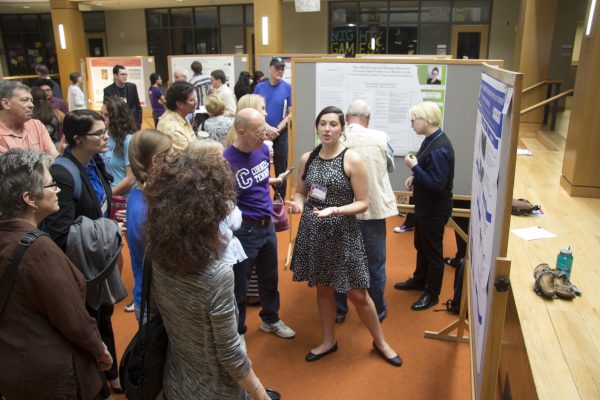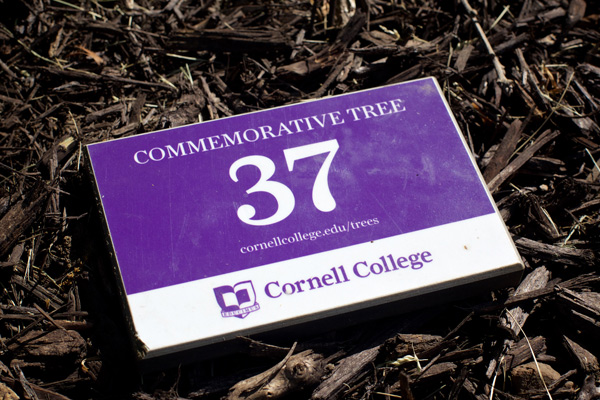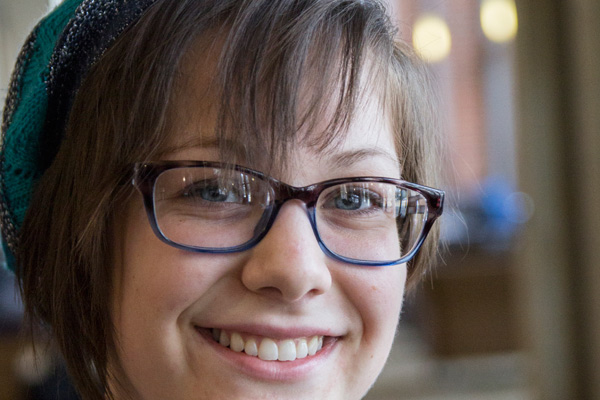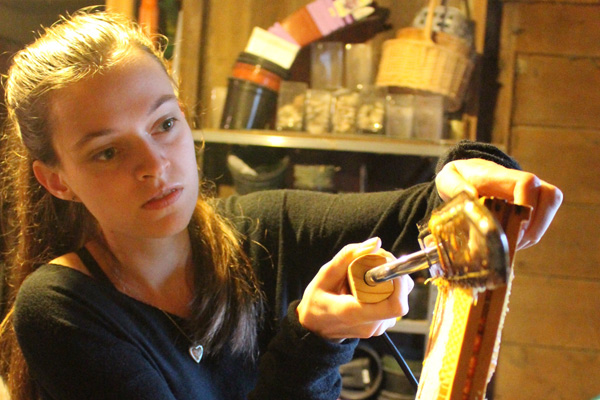Students show off research at 20th Symposium
In April Cornell College held its 20th Annual Student Symposium, providing a high-level opportunity for students, faculty, and the community to engage with each other on topics across the liberal arts. The 74 student presentations covered a wide variety of topics from feminist studies of operatic females to identifying diagnostic errors in health care.
Craig Tepper, professor of biology and a veteran of the symposia over the years, offered some thoughts on the symposium.

Web Extra: What topics are Cornell students researching? Find out here and here.
What is the biggest change in the symposium over the years?
The biggest change I have seen over the past 20 years is the sophistication of the work being presented. In the sciences, many of the oral and poster presentations are about research that students have conducted at major universities and medical schools. I would classify some of the projects as “cutting edge” science and some have led to publications for the students. In the sciences most research is presented in poster form. Some of the posters presented by our students have been presented at national conferences.
On the other end of the spectrum, I have seen more presentations on classwork that students have completed. I think this reflects a change in the way faculty teach at Cornell as classroom projects become more open-ended and research-oriented in all disciplines.
What does an opportunity like this mean for students?
The student symposium provides a venue for students to showcase their work and have it appreciated by students, faculty, and administrators. I think it’s important to provide students the opportunity to “show off” their work. It gives them the opportunity to explain their research to people with a wide variety of backgrounds. One advantage of the poster session is that students can tailor their explanation to the individual visiting their poster. If the goal is for the poster visitor to understand the research, the students must tailor and adjust their explanations to account for the visitor’s background. This is a key communication lesson for our students.
I also think it is valuable for students to have their work critiqued. One way to generate new ideas and new research directions is for students to present their research to a “fresh” pair of eyes. Peer review is an important part of scientific dissemination of information. Questions from the audience provide our students with the opportunity to learn to think on their feet.
What types of work are included?
I have sponsored multiple symposium presentations at each symposium. Presenting their work makes students realize their research is part of a larger picture. They also learn about the collaborative nature of science, and that the data they obtain has broader significance and belongs to everyone in the research group.
The research presentation allows my research students to step back and think about the larger picture. Since molecular biological research tends to be reductionist, the presentation must explain a complex phenomenon by analyzing its most basic biological mechanisms.
What does the symposium contribute to the Cornell experience?
The symposium allows students at all levels to show the Cornell community what they are passionate about and what excites them. Students also present research outside their majors, which enhances their liberal arts experience and allows them to integrate multiple perspectives into a coherent synthesis. It puts students outside their comfort level, yet shows students what they are capable of accomplishing.
How does it fit in with your teaching philosophy?
Almost all of the laboratory experiences in my courses are research-based. I introduce students to what scientists do and the meaning of doing science. In the laboratory component of my introductory biology courses, I get the students involved in my research. In the classroom, I introduce them to recently published pertinent research. Both of these aspects of my teaching are modeled by the presentations that students make during the symposium.
Anything else?
I continue to be amazed at what our students are capable of accomplishing. Much of the research presented I would deem to be at the graduate level. I am also proud of faculty participation. The event is well attended by faculty, which attests to the importance of student learning and the overall educational experience at Cornell.




